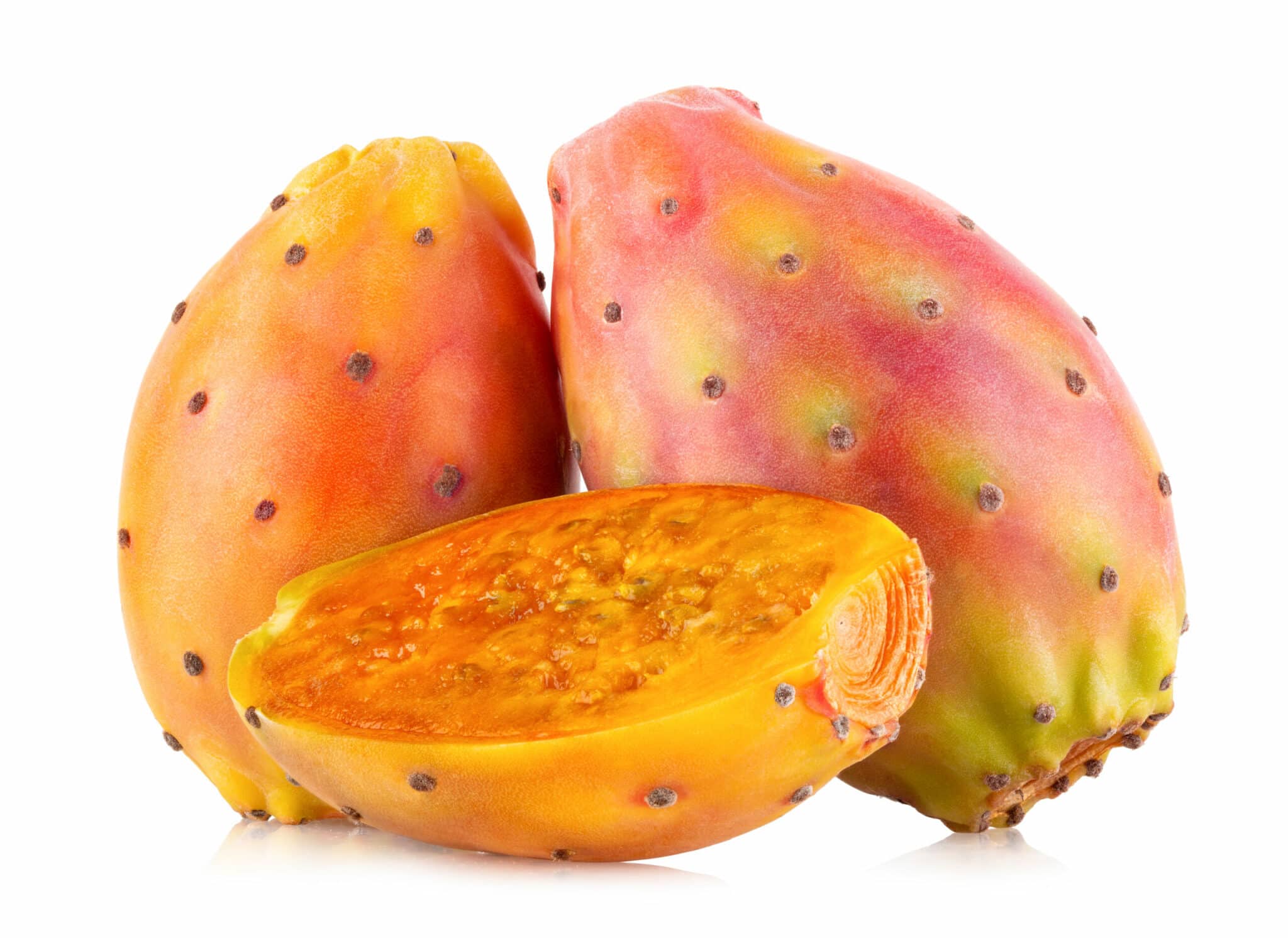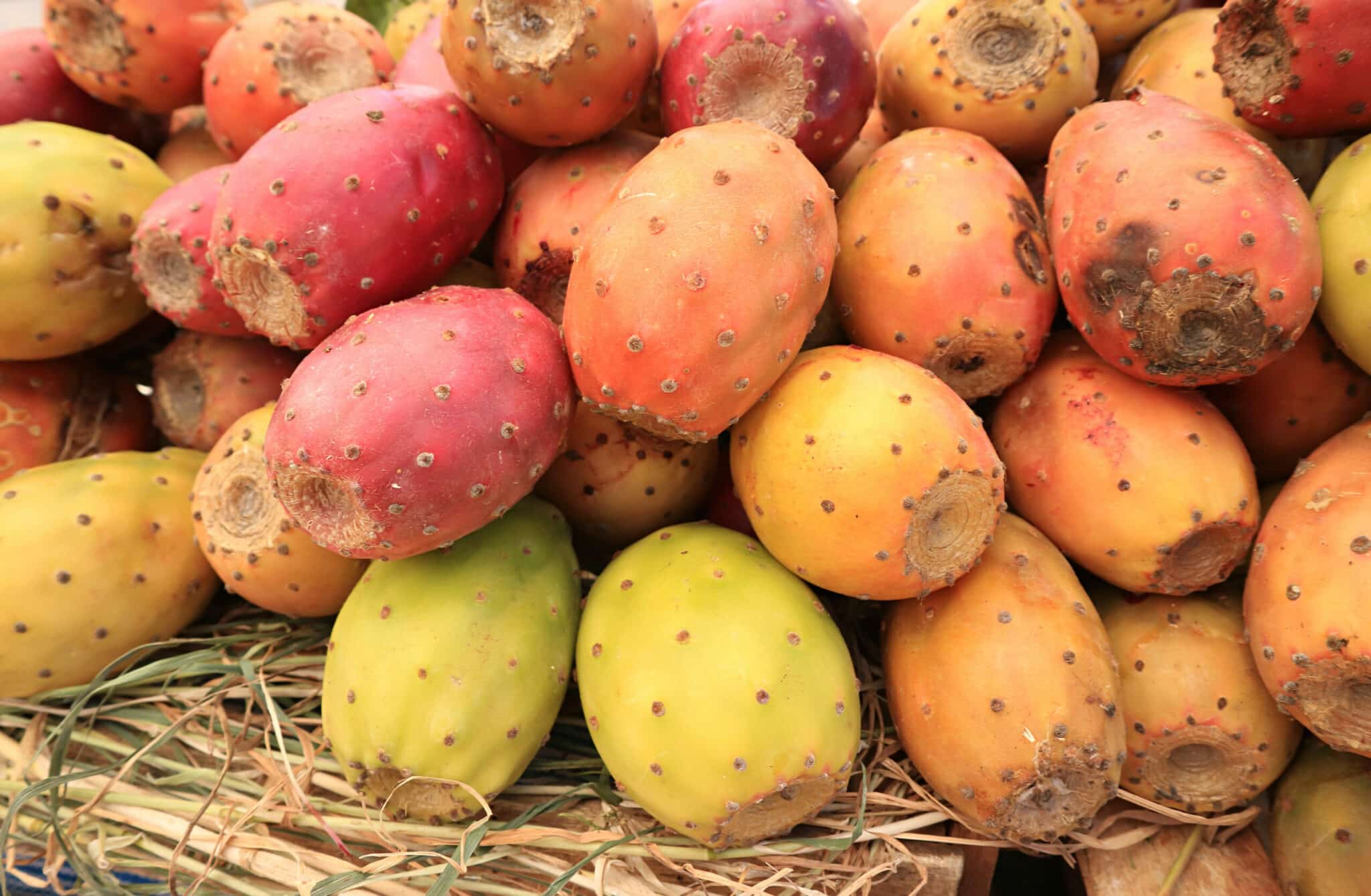What does a prickly pear taste like? Is this one of the most often asked questions concerning prickly pears? The cactus belongs to the Opuntia genus, which is quite big. Its brilliantly coloured tunas are edible, and candies and jams are frequently made with them. The fruit has a particular flavour, but its sharp spines are not for everyone. The prickly pear’s unusual flavour and high vitamin content are two reasons for its culinary popularity. The thorns on the pear, on the other hand, can be difficult to remove.

Prickly pears have a sweet flavour with a pleasantly tart undertone. The initial fruits are the sweetest, resembling bubble gum and watermelon in flavour. Prickly pears’ flavour changes as they age, so it’s better to consume them when they’re young. These colourful fruits, known as prickly pears, produce a wonderful juice that tastes like a cross between all-natural bubble gum (if such a thing exists) and watermelon.
What is prickly pear?
The opuntia plant produces the prickly pear fruit, which belongs to the cacti family. These red fruits grow on the plant’s paddles in Arizona and are quite popular. If you want to see these amazing brightly coloured tunas in the Valley of the Sun, September is the best month to visit.
Prickly pears have enchanted humans for millennia, and ancient Mexicans used them to make colonche (a form of cactus wine). The fermentation of the juice and pulp of prickly pears can still be seen in modern Mexican culture. Prickly pears are a popular component in everything from delectable appetizers, salads, vinaigrette, sauces, and bread to sweet and refreshing sweets, candies, syrups, and jellies, juices, and drinks due to their vivid flavours, eye-catching shapes, and gorgeous colours.
Prickly pears are coated in glochids, sharp, barb-like splinters that can be painful to touch because they’re cacti. It’s critical to wear thick gloves when handling a raw prickly pear to avoid injury or pain. Simply burn the glochids off with an open flame to get rid of them, and they “pop” off as a result of this. If you buy prickly pears at the store, the glochids will likely have already been removed, making the fruit safe to hold, peel, and slice right away.
What does prickly pear taste like?
Many people mistake the flavour of prickly pear for pineapple, although it is actually a berry that tastes more like raspberry or strawberry. The fruit is seeded and has a pleasant meaty content. Some people describe the flavour as a cross between classic bubble gum and watermelon.
The flavour of the fruit may vary according to its age, as the early fruits have a more concentrated flavour that increases as the size grows larger and elongated. Prickly pears, often known as Tuna, have a variety of nutritional benefits.
Prickly pears are comparable to dragon fruit and are high in antioxidants, vitamins, minerals, and fibre, beneficial to your health. The pulp also includes betalain, which aids in the fight against cancer, aging, and inflammation in the body. The fruit’s vitamins make it a great addition to your diet, and the flavour it generates is far superior to that of most conventional berries.
The prickly pear fruit has many health benefits and is a tart complement to numerous cuisines. Each fruit is high in dietary fibre and antioxidants, and minerals. Prickly pear extracts or supplements are useful in various treatments due to their anti-inflammatory properties, and their extract is used to treat type 2 diabetes and high cholesterol.
How to cook and use prickly pear in recipes?
In contrast to dealing with any other type of berry, dealing with prickly pears may require you to take additional safety precautions. Before you can prepare the fruit for your recipes, you will, as one might anticipate, need to remove the thorns. As a helpful hint, while removing the spikes from the fruit, you should have a thick leather glove, a sharp knife, or pliers. These are the ideal equipment to have.
Scrubbing the fruit is another effective method that can be used.
Here are just a few ways that prickly pears can be incorporated into culinary creations and beverages.
- Prickly pears can be used to make a variety of beverages, including lemonade, juice, and even cocktails.
- When used in jellies, cupcakes, and marmalade, prickly pears also enhance the flavours.
- You can also boil the fruit with orange and lemon juice to produce a wonderful sauce for cheesecakes and salads. This sauce may be made by boiling the fruit.
Is the prickly pear a sweet fruit?
Prickly pears, when ripe, have a flavour that is highly sweet and completely unique to themselves. They are packed with seeds and have a very luscious texture. If you are someone who will only consume grapes that do not have seeds, eating this fruit will be difficult for you because there is no way to avoid them. However, the seeds can be ingested without difficulty or discomfort, and they do no harm.
What is the best way to eat a prickly pear?
- Cactus Fruit Identification and Harvesting
Cactus fruit is pear-shaped and grows on the edges of the flat pads of the cactus. They can be green (less sweet) or crimson (extremely delicious) in hue, with orange tones in between. The small dots on them are not thorns, but glochids, which are small hair-like splinters that can pierce your skin and are extremely painful and difficult to see. You must safeguard your hands when gathering prickly pear cactus fruit. You can use thick gloves or a couple of layers of an old towel. Stacking six paper towels together should also be enough. Grip the fruit with gloves or towels and gently twist it. Greener fruits will require a tighter grip and twisting, but riper fruits will easily pop off with little effort. Toss the fruits together in a basin or basket. Avoid touching the fruit with your hands.
- Cactus Fruit Preparation
You’ll need to remove the glochids before handling the fruit. (If you buy the fruit at a store, the glochids should be removed already.) Over an open flame, the glochids can be readily burnt away. Toss fruit with tongs or place it on the end of a fork. Turn the fruit slowly over the open flame. You may hear popping sounds or watch small sparks shoot off the fruit as the glochids burn off. Continue until all of the dots have become black, indicating that the glochids are no longer present. Remember to get the glochid spots on the top and bottom of the fruit since they are more concentrated there.
- Cutting Through the Skin
Begin by slicing approximately a quarter inch from the fruit’s ends. Then, using your knife, cut the fruit’s skin lengthwise across the top, approximately a quarter-inch down into the fruit.
- Taking Off the Skin
Pull the skin back from the apple with your fingers. On the outside, the skin is thin, but there is a thick layer underneath that peels away as well. Remove all skin from the pear-shaped piece of fruit, leaving only the interior.
- Prickly Pears to be served
The prickly pear can now be eaten after the skin has been removed. The seeds of the prickly pear are small and hard to bite through, but they are safe to consume if you prefer. You can also chew on the fruit and seeds before spitting out the seeds. To remove the seeds, you can use a juicer or sieve.

Is prickly pear similar to dragon fruit in flavor?
Both fruits have projections on their surfaces, but the dragon fruit has bracteoles, which are green and scale-like, and the prickly pear has glochids, which are multiple small spiny hair-like projections. The bracteoles on the dragon fruit are removed before the fruit is consumed, whereas the glochids on the prickly pear are not.
Why is the prickly pear known as tuna?
The numerous pointed spines carried by the stems of the prickly pear, also known as pears or tunas, are where the plant’s common name comes from. The prickly component of the name refers to the long, sharp spines that are actually modified leaves that become more resistant to damage as they age.
Conclusion
Prickly pears aren’t your typical pears, at least not in appearance, but this red fruit has health advantages that rival most berries. This delectable pear is a pleasant addition to many dishes, whether you buy it or get it fresh at a store. It is an ideal and vital ingredient for every kitchen because of its high nutritional qualities and the blend of tastes it carries. Prickly pear juice can also be mixed with wine, and it has a flavor that is extremely similar to cactus wine, an old Mexican beverage.
Prickly pears are a good source of antioxidants and dietary fiber. It has a lot of calcium, potassium, and phosphorus in it. It also contains a lot of vitamin E and fatty acids. You can consume the fruit raw or cooked. Both the fruit and the pads are edible, and the fruit is commonly consumed raw. However, the seeds should not be consumed. Potassium, calcium, and phosphorus are all abundant in the prickly pear fruit.
